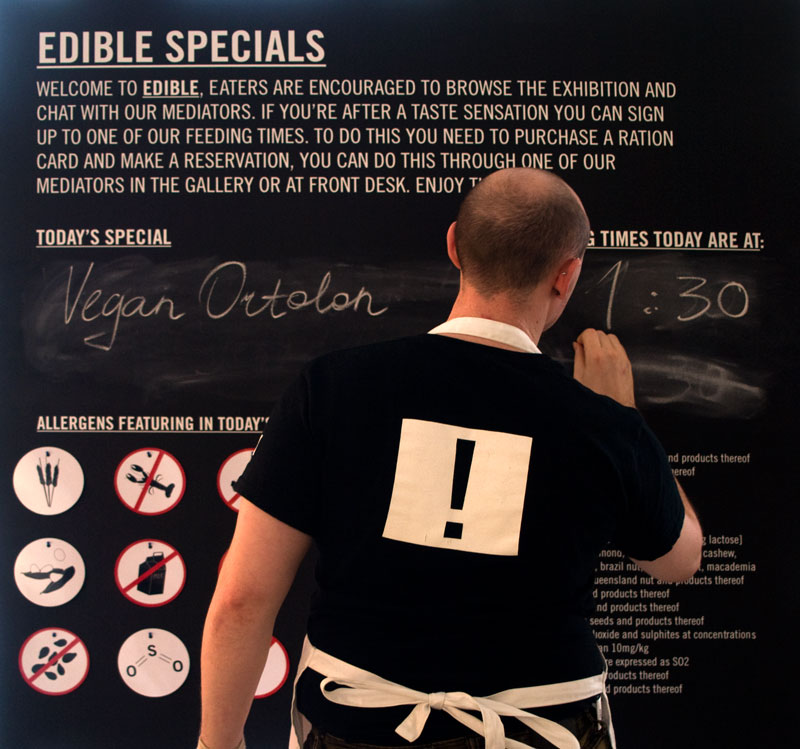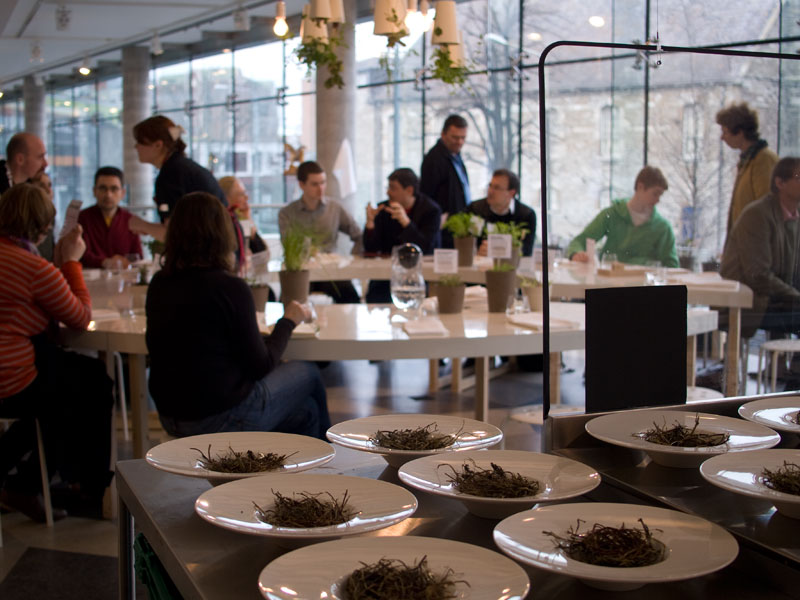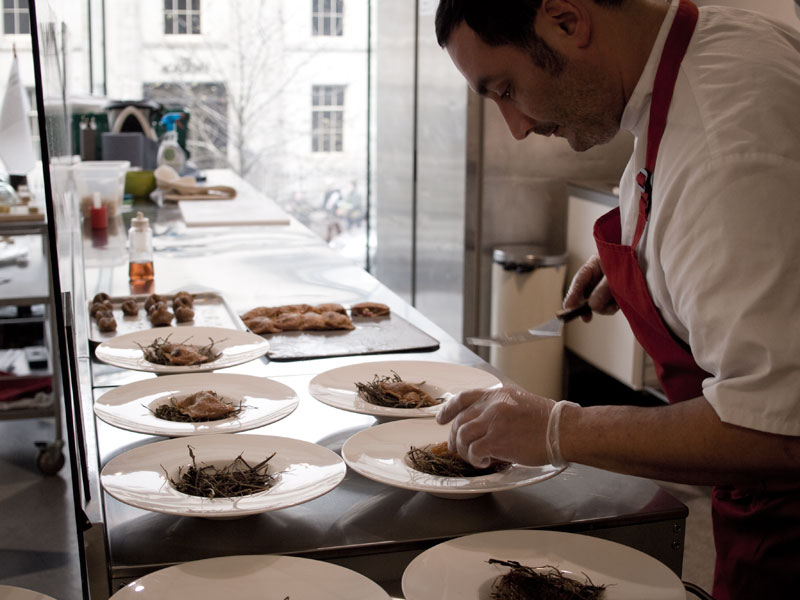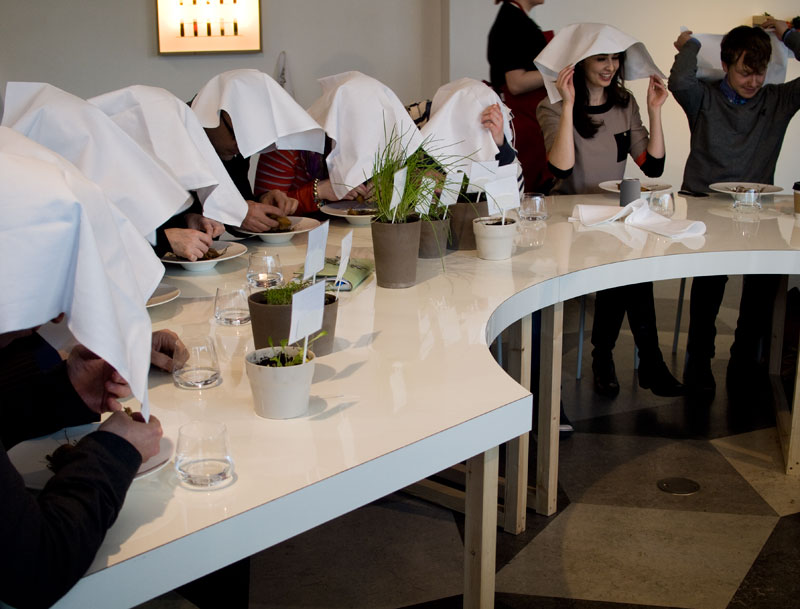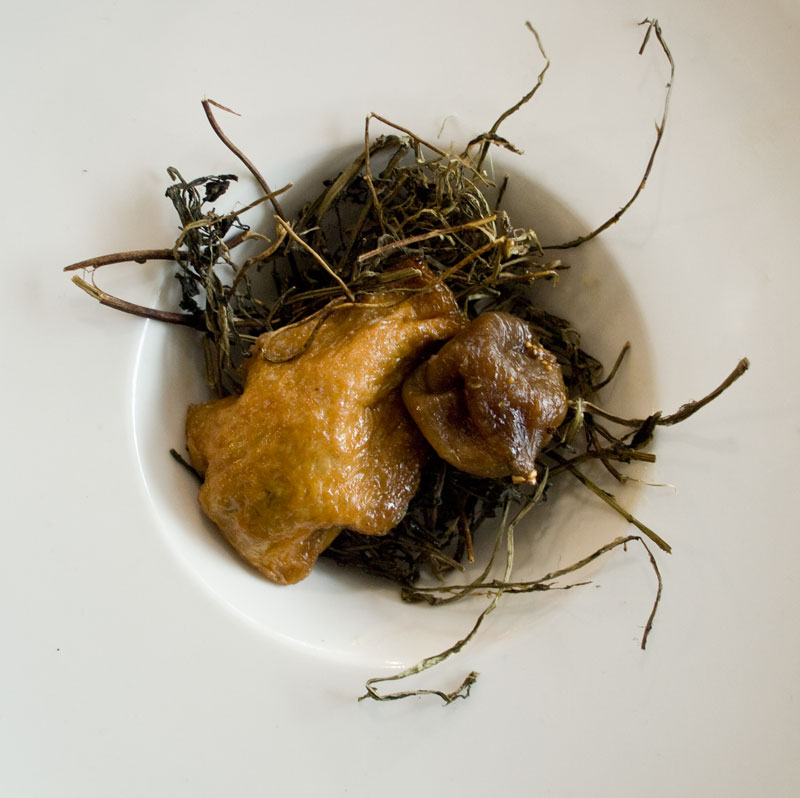
Q&A with the Edible Curators: Cat Kramer & Zack Denfeld
Why make an exhibition about food?
Every Eater has a stake in the future of food so it’s encouraging that people are increasingly interested in what kinds of food they eat. This awareness of food issues is driven by various motivating factors; from personal health to concerns about global resource depletion. Creating an exhibition about food can be quite challenging because of the number of voices and perspectives that deserve to be included. There are many strong, and often conflicting, opinions about this universal requirement for survival. However, we find this widespread engagement inspiring and hope the exhibition captures some of this energy.
How does EDIBLE respond to such a broad topic?
There have been a number of exceptional exhibitions on agriculture, urban farming and imagining the ways we are going to feed the 7 billion+ humans on planet Earth in the last few years. However, early on in the process of developing EDIBLE, we decided to narrow the scope and focus on the experience of eating under the maxim: ‘Eaters are agents of selection’. We wanted to make a more explicit connection between the kitchen and the biosphere, and the way individual chefs and Eaters serve as a bridge between these two domains. It was really important to us that visitors to the exhibition get to eat foods (and readers of this catalogue get to use the recipes printed). We are excited to see how the possibility of eating the exhibits, rather than just looking or touching, invites discussion and debate.
What do you mean by ‘Eaters are agents of selection’?
Most Eaters accept that animal and plant breeders have steered evolution for thousands of years. However, Eaters and chefs also exert selection pressures on the kinds of life forms & ingredients that are propagated within the eco-agro-culinary system. Every human Eater slowly reformulates the planet as they consume it.
The daily choice we make about what to eat for dinner, whether it’s a Big Mac meal or a homegrown salad, impacts the diversity, abundance and distribution of life on the planet. As such, you are an agent of selection.
We have assembled a collection of artefacts, recipes and stories that we think typify some of the ways humans unconsciously sculpt the planet’s biosphere through eating habits, flavour preferences and food technologies. We hope this exhibition is an opportunity to explore the co-evolution of gastronomy and larger ecological, technological and political systems.
You mention ingredient selection as one vector for change within the food system. Can you tell us about some of the interesting ingredients featured in EDIBLE?
Within this catalog and in the show EDIBLE you will find that many of the artists, scientists and chefs have a very particular relationship to the life forms they prepare and serve. Some are interested in the nutritional or ecological implications of the ingredients they serve, while others have chosen foods that have an important or hidden history.
In terms of genetic diversity, Oliver Moore recommends 3 different varieties of beetroot (Boltardy, Cylindra & Chioggia) for his community-farm-inspired juice recipe (page xxx). We have also selected 12 varieties of potatoes cultivated and maintained by Irish Seed Savers as a way of acknowledging all of the largely uncelebrated work on selective breeding that farmers and breeders have done for centuries.
We also feature a number of edible plants that remain under-explored, despite the insatiable appetite of humans. Dr. Prannie Rhatigan has been making the case for incorporating more seaweed in the Irish diet through writing, speaking and serving delicious recipes (see page xxx for an example). In this show we feature eight varieties of edible seaweeds that may be new to most eaters, and will also be serving one of her dishes.
This exhibition also includes examples of culinary trends, such as invasivorism (eating invasive species – page xxx) and entomophagy (eating insects – page xxx). Do these practices raise concerns? Are they simply fads, or compelling enough to propagate into kitchens and restaurants more broadly? Our own work includes a radiation-bred variety of mint (page xxx) and glowing sushi, which calls for a transgenic fish usually sold as a pet (page xxx). The line of what we consider a food and edible is constantly fluctuating.
What do you believe is the taste of things to come?
The future of food is much more complex than we can predict. But we are sure that it will look nothing like the techno-utopic image of life-extending pill food eaten in outerspace or the return to a neo-feudal agricultural economy imagined by doomers within the peak oil and climate change communities. However, we do expect that there will be a major change in the kinds of ingredients we use, and hope that food systems will increasingly privilege resilience over efficiency.
If one takes a long view of history, it is incredible that ingredients like potato, tomato, chili peppers, corn and chocolate have only recently gone global. Before the 16th century none of these five ingredients were known outside of the Americas, and now they play a central role in human diets in many places on the planet. Today, ingredients like Quinoa and pomegranate are increasingly cultivated as Eaters demand them, and we think that there are a number of edible plants out there that will become dominant over the next 100 years because of their medicinal, nutritional or gastronomic properties. This new set of dominate genomes will probably come out of left field. New food technologies and recipes will build on and reinforce this new genomic regime, and in a perfect world, the ingredients Eaters prefer will run in parallel with an increasingly sustainable food system.
We are excited about hearing what visitors to the exhibition believe will be the taste of things to come, and hopefully some of the foods they taste will serve as inspiration.
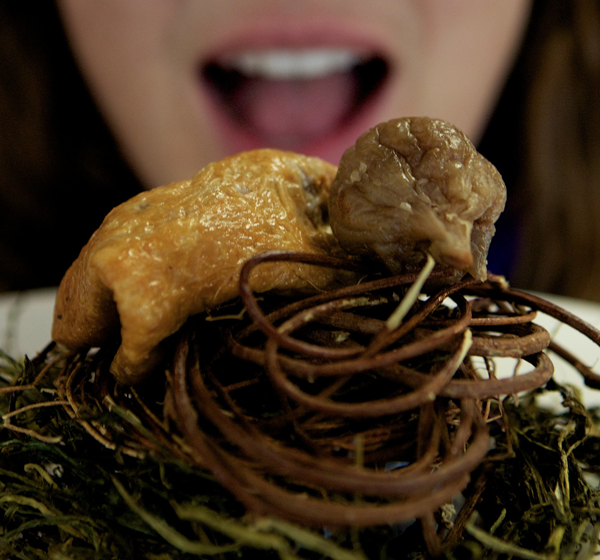 Feeding Times Special: Vegan Ortolan
Feeding Times Special: Vegan Ortolan 